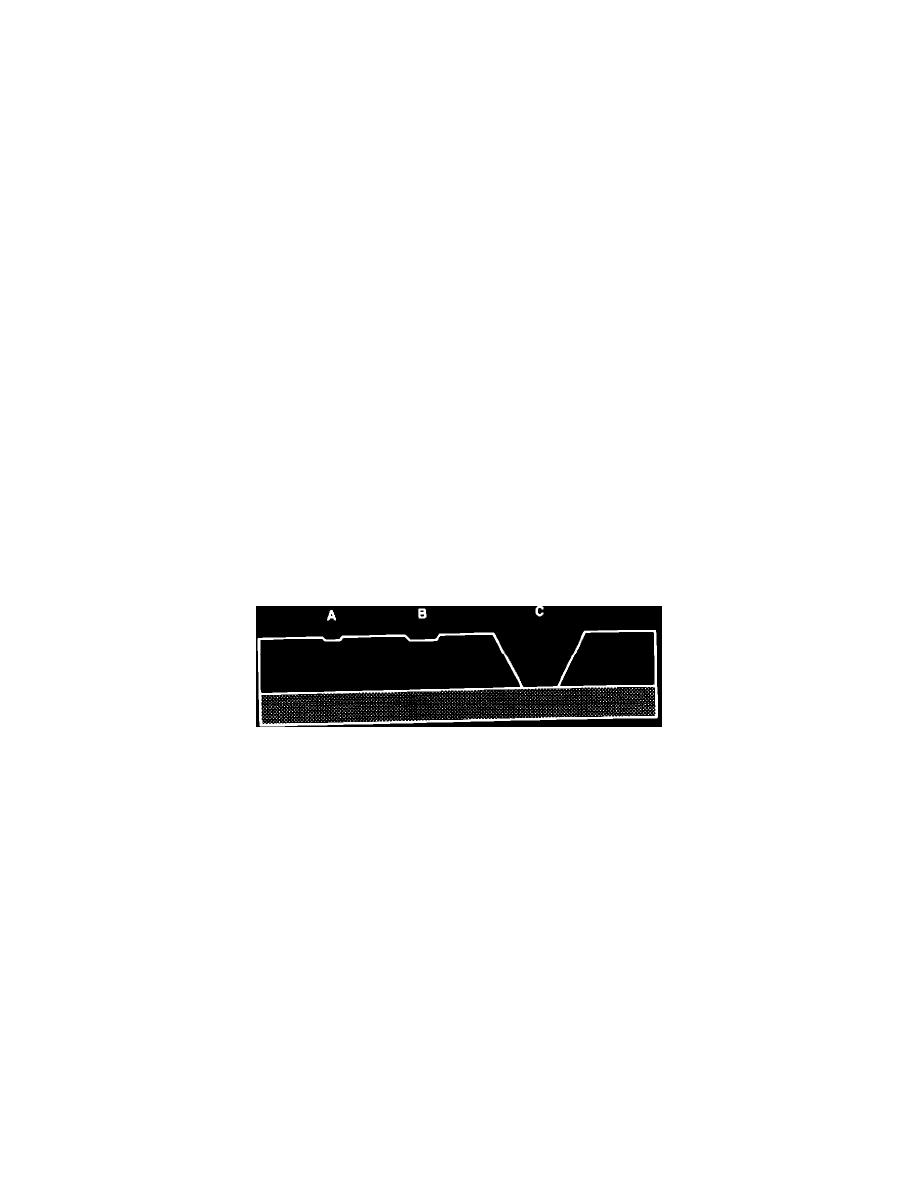Spirit V6-181 3.0L SOHC (1990)

Chemical etching (Figure 3), or "acid rain", is the result of sulfur dioxide or nitrogen oxides being released into the atmosphere and mixing with water
and the ozone to create either sulfuric or nitric acid.
The typical acid rain damage may look like water droplets that have dried on the paint and caused discoloration. In some cases damage appears as a
white ring with a clear dull center. Severe cases show pitting.
Discoloration may also vary depending on the color of the paint. Yellow finishes may appear as a white or brown spot. Medium blue may have a
whitening spot. White may discolor to pink and medium red appears purple.
Restoration of chemical etching may be difficult. However, the procedure varies with the degree of damage encountered. The degree of damage can be
determined by testing on a two-foot square area of the damaged panel.
Repair Materials
The following Meguiar's Mirror Glaze Products can be used in the repair of clearcoat damage.
Meguiar's Mirror Glaze W-1000 (8 in.) or 5500 (5.5 in.) Hi-Tech Finesse (Foam) Polishing Pads
Meguiar's Mirror Glaze W-8000 Wool Buffing Pads
Meguiar's Mirror Glaze No. 62 (M-6201) Carwash Shampoo & Conditioner
Meguiar's Mirror Glaze No. 14 (M-1401) Correction Creme
Meguiar's Mirror Glaze No. 15 (M-1501) Clearcoat Conditioner
Meguiar's Mirror Glaze Hi-Tech Finesse Sanding Paper (S-2000)
Meguiar's Mirror Glaze E-7200 Hi-Tech Finesse Backing Pads
To locate the nearest Meguiar's dealer, call the "Meguiar's Helpline" 800-347-5700.
Test Steps/Repair Procedure
Figure 4
The following progressive test steps will determine the repair procedure necessary to repair the various levels of damage encountered as shown in Figure
4. Testing should be performed on the most severely damaged two-foot square section of the panel. The test steps begin with the least abrasive repair and
progress to the most severe.
CAUTION:
The factory applied clearcoat is only 1.6 mils thick. Testing shows that nearly all etching can be eliminated when less than 0.4 mil of
clearcoat is removed. A Professional Service Equipment Film Thickness Gauge, (PN W1099) is available. PRIOR TO ALL BUFFING
AND SANDING PROCEDURES, MEASURE THE PAINT FILM THICKNESS. During repair, do not remove more than 0.4 mil of
paint film. If after repair, more than 0.4 mil of paint film has been removed, the panel will have to have new clearcoat applied.
SURFACE LEVEL DAMAGE (A)
^
Using Meguiar's Mirror Glaze No. 62, wash and dry a two-foot square test area on the vehicle.
^
Dry the surface and inspect for any remaining spotting. If the spotting will wash off the test area, it is most likely alkaline spotting and can be
washed off the remaining areas with Mirror Glaze No. 62.
If the damage appears to be industrial fallout or as chemical etching in the surface coat, continue working on the test area as directed in level (B) that
follows.
CLEARCOAT DAMAGE FROM INDUSTRIAL FALLOUT OR CHEMICAL ETCHING (B)
Industrial Fallout
CAUTION:
WHEN BUFFING THE HOOD, OPEN IT FAR ENOUGH TO PREVENT MARRING THE FENDER. WHEN BUFFING THE
